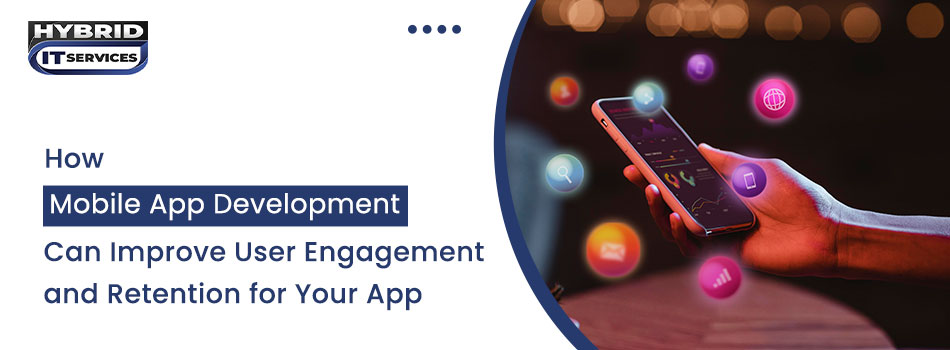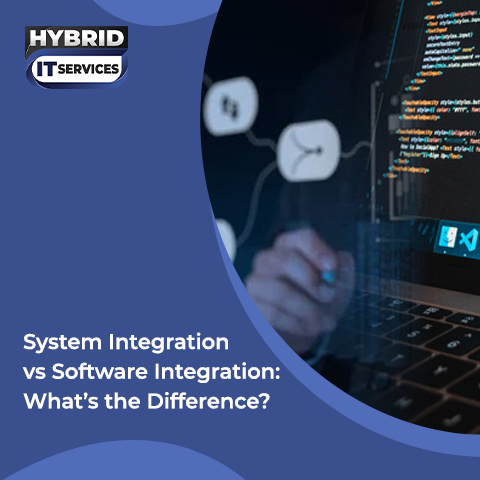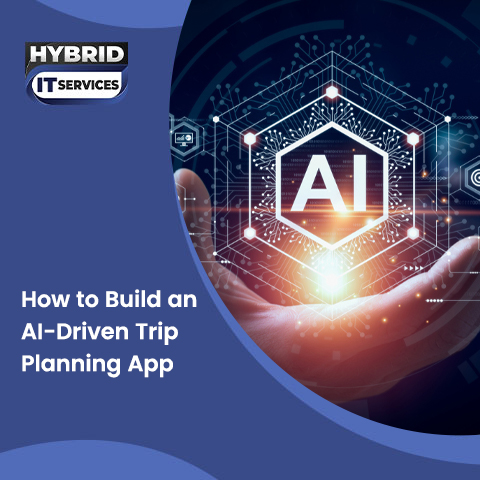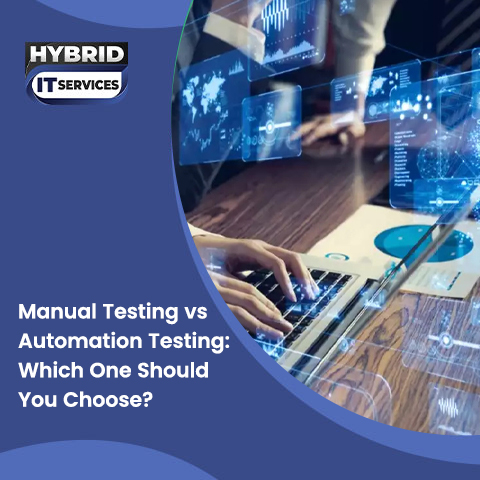In today's digital age, mobile apps have become integral to our daily lives, offering a multitude of services at our fingertips. However, with millions of apps available across app stores, retaining users and keeping them engaged remains a significant challenge for developers and businesses. Mobile app development services play a crucial role in enhancing user engagement and retention by leveraging various strategies and technologies.
This article will delve into the fundamentals of user retention and mobile app engagement, provide ten effective tricks to engage and retain users, explore how Hybrid IT can help build customized apps, and conclude with the importance of these services.
Basics of User Retention and Mobile App Engagement
User retention and engagement are critical metrics that determine the success of a mobile app. User retention refers to the ability of an app to keep users returning over a period of time, while user engagement measures how actively users interact with the app. Both metrics are interrelated and crucial for the app's growth and profitability. High user retention and engagement rates indicate that users find value in the app, which can lead to increased revenue through in-app purchases, subscriptions, and advertisements.
Several factors contribute to effective user retention and engagement:
- User Experience (UX): A seamless, intuitive, and enjoyable user experience is paramount. Apps with a cluttered interface, slow loading times, or complex navigation are likely to lose users quickly.
- Personalization: Tailoring the app experience to individual user preferences can significantly enhance engagement. Personalization can include content recommendations, personalized notifications, and customized user interfaces.
- Content Quality: High-quality, relevant, and regularly updated content keeps users coming back. Whether it's articles, videos, music, or social media updates, the content must align with user interests.
- Performance and Reliability: An app that crashes frequently or has bugs will frustrate users. Ensuring the app runs smoothly and reliably is crucial for retaining users.
- Feedback and Support: Providing an easy way for users to give feedback and access support can improve user satisfaction. Addressing user concerns promptly can prevent churn.
You May Also Read: How Can Custom Mobile App Development Boost your Business?
10 Tips to Engage and Retain Users
In today's competitive mobile app market, keeping users engaged and coming back for more is crucial for success. Here are ten detailed strategies to help improve user engagement and retention for your app:
Crafting Compelling User Experiences (UX)
A user-friendly interface is key. Ensure that the app is easy to navigate, with clear calls to action and a layout that fosters intuitive interaction. An intuitive design reduces user frustration and keeps them engaged from the start.
Cater to individual user preferences by implementing features that personalize the app experience based on user data, such as past behavior or interests. This creates a more relevant and engaging experience for each user, making them feel valued and understood.
Optimizing Performance
No one enjoys a slow or buggy app. Optimize your app's performance across different devices and network conditions to minimize loading times and crashes. Ensure your app runs smoothly and reliably to keep users satisfied and coming back for more.
Data-Driven Insights and Continuous Improvement
Integrate analytics tools to track user behavior within the app. This data reveals how users interact with features, identify areas for improvement, and inform future updates to enhance engagement. Regularly review and act on this data to keep improving the app.
Additionally, keeping your app fresh is vital. Plan and implement regular updates that introduce new features, address user feedback, and fix bugs. This demonstrates responsiveness to user needs and keeps the app feeling dynamic and evolving.
You May Also Read: How Often Should You Update Your Mobile App?
Onboarding Experience
Use interactive tutorials to demonstrate key features. Guide users through essential tasks using step-by-step instructions, ensuring they understand how to navigate and utilize the app's functionalities effectively.
Incorporate tooltips and guided tours that highlight important areas of the app. These visual aids help users quickly grasp the app's layout and find the features they need, enhancing their initial experience.
Push Notifications
Customize notifications based on user behavior and preferences. Send reminders about items left in a shopping cart, updates about new content that matches their interests, or relevant offers to keep them engaged. Be mindful of the timing and frequency of notifications. Avoid overwhelming users with too many messages, which can lead to annoyance and app uninstallation. Use data to determine the best times to send notifications.
Rewards and Achievements
Introduce a rewards system where users can earn points, badges, or other incentives for completing certain actions. This can motivate users to engage more with the app and foster a sense of accomplishment. Create challenges or competitions that encourage users to participate and engage more with the app. Leaderboards and progress tracking can add a competitive element, motivating users to return and interact regularly.
Social Integration
Allow users to share their experiences and achievements on social media platforms. This not only increases engagement but also promotes your app to a broader audience. Facilitate in-app communities or forums where users can interact, share tips, and build a sense of belonging. A strong community can keep users engaged and foster loyalty.
In-App Messaging
Implement in-app messaging to provide real-time communication with users. This can be used for customer support, sending updates, or engaging users in conversations, making them feel more connected to the app. Use in-app messaging to send personalized messages or special offers. This can enhance the user experience by making interactions feel more direct and tailored to individual users.
User Feedback Integration
Create channels for users to provide feedback and actively integrate this feedback into updates. Show users that their opinions matter by making visible changes based on their suggestions. Involve users in beta testing to identify potential issues and gather insights before full-scale releases. This helps ensure that new features and updates meet user expectations and work smoothly.
Security and Privacy
Implement strong security measures to protect user data and build trust. Ensure that your app complies with privacy regulations and provides transparency about data usage. Ensure transparent privacy policies and give users control over their data. This builds trust and reassures users that their information is safe and handled responsibly.
You May Also Read: How to Improve User Experience on Mobile Apps?
Hybrid IT Helps You to Enhance User Retention
Hybrid IT solutions combine the best of both worlds traditional IT infrastructure and modern cloud services. When it comes to mobile app development, Hybrid IT can be a game-changer by enabling the creation of customized apps that cater to specific user needs and business objectives.
Flexibility and Scalability:
Hybrid IT allows developers to leverage cloud resources for scalability while maintaining critical operations on-premises. This flexibility ensures that apps can handle varying loads and user demands without compromising performance.
Cost Efficiency:
By using a mix of on-premises and cloud infrastructure, businesses can optimize costs. They can invest in cloud services for tasks that require scalability and use existing infrastructure for stable operations, reducing overall expenditure.
Faster Time-to-Market:
Hybrid IT facilitates rapid development and deployment of mobile apps. Developers can utilize cloud-based development tools and platforms, speeding up the creation and testing process. This agility allows businesses to launch apps faster and stay competitive.
Enhanced Security:
Combining cloud and on-premises resources allows businesses to implement robust security measures. Sensitive data can be stored on-premises, while less critical functions can be managed in the cloud, ensuring compliance and data protection.
Customization and Integration:
Hybrid IT enables seamless integration of various services and systems, allowing for highly customized app experiences. Developers can create apps that integrate with existing business processes, enhancing functionality and user experience.
Conclusion
In the competitive world of mobile apps, user engagement and retention are pivotal to an app's success. Mobile app development services, backed by strategies such as personalized experiences, high-quality content, and robust performance, can significantly improve these metrics. Additionally, employing tricks like a great onboarding experience, push notifications, gamification, and loyalty programs can further enhance user engagement and retention.
Hybrid IT plays a crucial role in developing customized apps that meet specific user needs and business goals, offering flexibility, scalability, cost efficiency, and enhanced security. By leveraging these services and strategies, businesses can ensure their mobile apps not only attract users but also keep them engaged and loyal over the long term.






